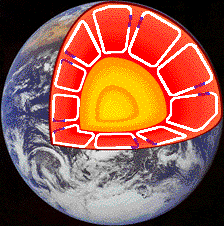This animated image shows heat rising in convection currents from the
outer boundary of the core and cooling at the surface.
How a Planet Cools Off
Planetary bodies cool off by
- 1.) motions inside the body, which bring hot material from deep inside, closer to the surface
- 2.) volcanism, which brings hot material onto the surface
- 3.) circulation in the atmosphere and oceans, where air and water is carried from the warm regions to the cooler regions
- 4.) radiation of heat from the surface, the way an oven radiates heat.
If a planet is small, it can cool much faster to space than can a body which is larger.
Earth has had a long a complicated cooling history. An understanding of the Earth's history might begin with the record of geologic time.
You might also be interested in:
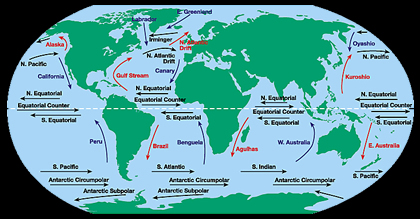
The water at the ocean surface is moved by powerful wind. The wind is able to move the top 400 meters of the ocean. This moving water is called surface ocean currents. Surface ocean currents form large
...more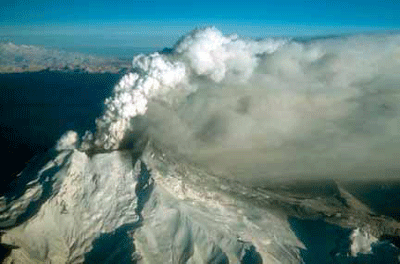
Ash is formed as a volcano erupts when rocks made by the volcano blow apart into millions of tiny pieces. The rocks are still very hot, because they just formed from lava. If the hot rocks come into contact
...more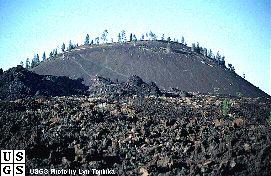
Cinder cones are simple volcanoes which have a cone shape and are not very big. Compare the size of this volcano to the strato-volcano in this image. They are usually made of piles of lava, not ash. During
...more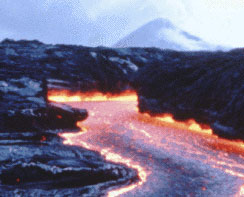
Lava can move in two ways, wide flat lava flows, or through channels which squeeze the lava into a small area. The fastest lava flows move at about 6 mi/hr, an easy jog, but they average between 2/3 and
...more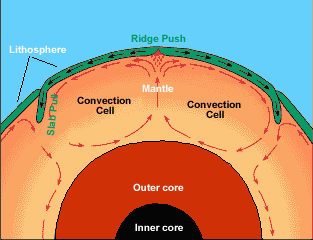
Plates at our planet’s surface move because heat in the Earth’s core causes molten rock in the mantle layer to flow. We used to think the Earth’s plates just surfed on top of the moving mantle, but now
...more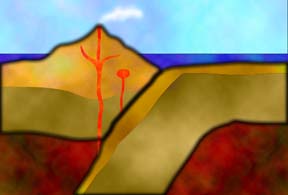
Many kinds of surface features are clues to a sliding lithosphere. Two types of features can form when plates move apart. At ocean ridges, the crust splits apart to make room for molten mantle rock. Continental
...more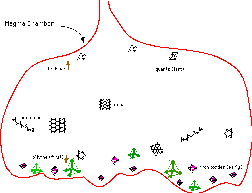
When magma is erupted onto the surface in the form of lava, it becomes silicate rock. With each different eruption of the volcano, lava which comes to the surface is made of slightly different chemicals,
...more
